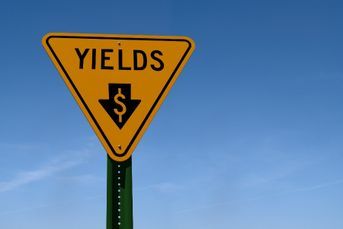Fixed-income focus: Beware ending up with the ‘ultra-short’ straw

Given the changing outlook on Federal Reserve rate moves, fixed-income decisions taken last year warrant a rethink.
So far this year, the Federal Reserve has gone from being in a firm rate-hiking cycle into a so-called “Powell pause” — where it put interest rates on hold due to slowing global growth and rising risks to the U.S. economy.
Following an extension of the “pause” at the May Federal Open Market Committee meeting, with a nod to inflation running below 2%, the question markets are pondering now is whether the Fed could cut rates before the end of the year.
This change in rhetoric from the U.S. central bank has called into question a popular asset allocation call of 2018, which saw more than $70 billion flow into the Morningstar ultrashort bond category as of Dec. 31.
(More: Investors are headed to extra innings)
Last year, the overarching market view was that the Fed would continue its rate-hiking cycle through 2019, based on underlying economic strength and relatively hawkish language from Fed chairman Jerome Powell. As a result, many investors chose to reduce duration in their portfolios by moving into ultrashort assets — a common approach in a rising interest rate environment.
In our view, the thesis behind this allocation is now in question. The Fed dot plot now shows zero hikes in 2019, according to Bloomberg as of May 1, while the futures market appears to be fully pricing in a rate cut in 2020.
As such, fixed-income decisions taken last year warrant a rethink, in our opinion.
What investors want from fixed income
In reviewing fixed-income allocations, we think it is important that investors remember two of the primary reasons for investing in the asset class: diversification from equity risk and income generation.
Even in a rising rate environment, the income component paid out by intermediate-term bonds helps mitigate the price impact from rising yields. Generally speaking, bonds with longer durations have a higher yield (risk-free rate plus credit spread) and therefore generate a higher degree of income. This is reflected in the outperformance of the intermediate-term fixed-income category versus ultrashort fixed income on a total return basis over the past 15 years. (See Figure 2.)
| 15-year as of 12/31/18 | Returns | Sharpe Ratio | Avg. Drawdown |
|---|---|---|---|
| 60% S&P 500/ 40% Intermediate-term fixed income |
6.4% | 0.65 | 2.61% |
| 60% S&P 500/ 40% Ultra-short fixed income |
5.7% | 0.57 | 2.76% |
Additionally, over the same time period, intermediate-term fixed income has delivered a greater diversification benefit from equity volatility compared with ultrashort fixed income, particularly in down markets.
(More: Active vs. passive: The case for both)
It is not our base case that we are heading toward an imminent recession or a Fed rate cut. But we believe the U.S. economy is slowing to around trend growth, which over the past decade is growth of about 1.9% per year according to Trading Economics.
However, if the Fed shifts toward policy easing (either a rate cut or renewed asset purchases) in the not too distant future, then having duration exposure in fixed-income allocations could provide an important source of ballast against potential equity market volatility. (See figure 3.)
There may be a number of reasons investors moved into ultrashort duration products last year. But if they did so to shelter from rising interest rates — a thesis that may no longer be valid — then we believe now is the time to revisit that trade.
(More: Smart money is pouring into fixed income)
Gautam Khanna is senior portfolio manager at Insight Investment, a BNY Mellon company.
Learn more about reprints and licensing for this article.






